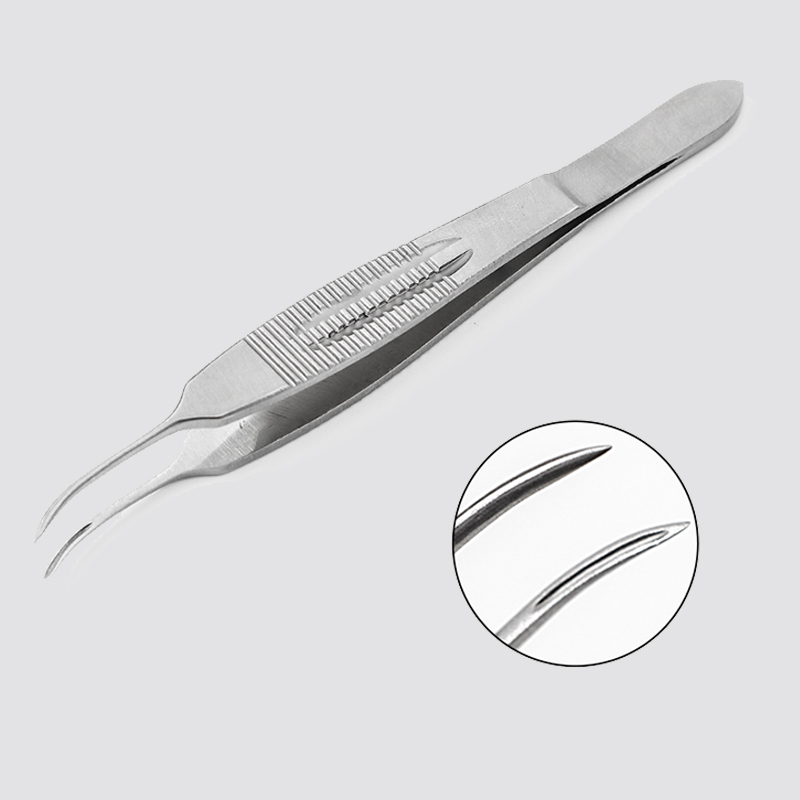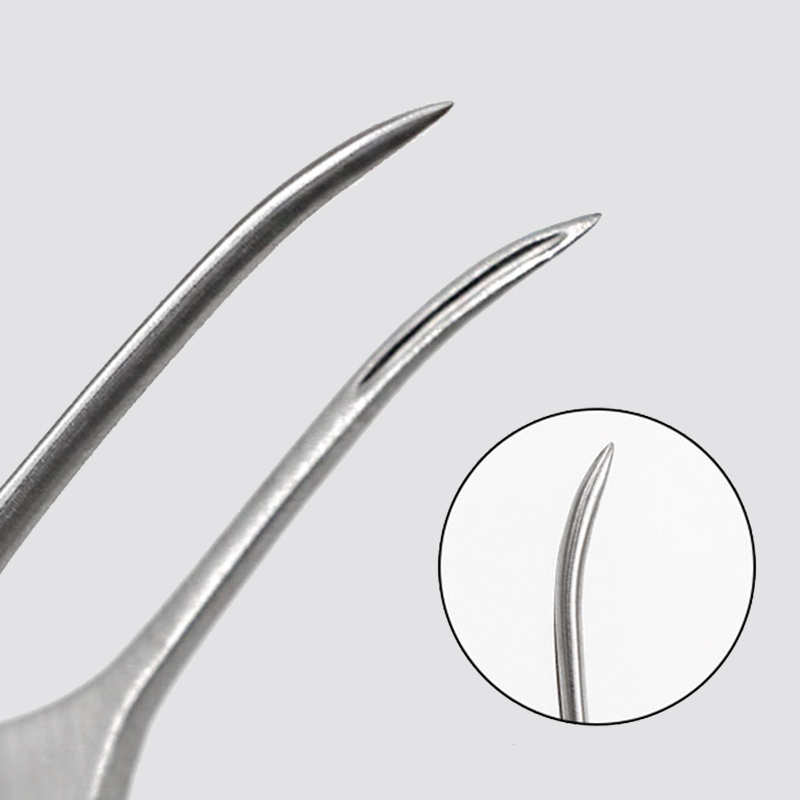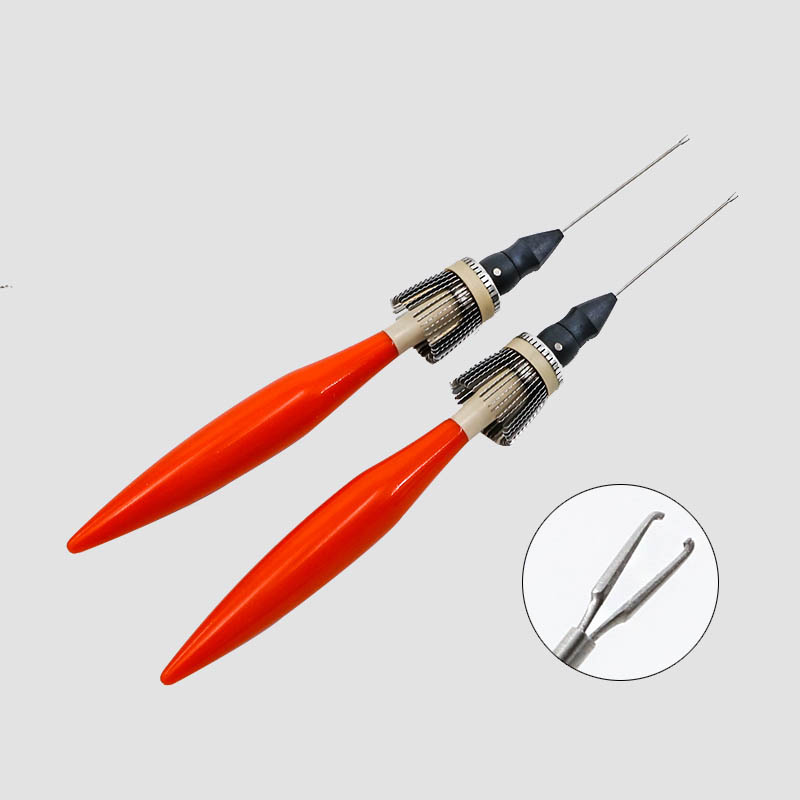Introduction to Needle Holders
 Needle-holding forceps, or needle holders, a surgical instruments in clinical medicine and surgical operations. It is mainly used for holding suture needles to close various tissues. Sometimes it is also used for knotting instruments.
Needle-holding forceps, or needle holders, a surgical instruments in clinical medicine and surgical operations. It is mainly used for holding suture needles to close various tissues. Sometimes it is also used for knotting instruments.
With the tip of the needle holder to clamp the needle in the middle, after the 1/3 junction is appropriate, in most cases clamping the tip of the needle should be done to the left, special circumstances can be done to the right, the suture should be overlapped by 1/3, and the overlap of the winding part of the line is also placed in the needle mouth, in order to facilitate the operation of the needle is clamped in the middle of the needle holder, it is easy to break the needle.
What Are Needle Holders?
Needle-holding forceps, or needle holders, are surgical instruments used in clinical medicine and surgical operations.
Uses of Needle Holders
Needle holders are mainly used for holding sewing needles to close various tissues. Sometimes it is also used for instrument knotting. The tip of the needle holder should be used to clip the middle and back 1/3 junction of the sewing needle, in most cases the tip of the clamped needle should be to the left, in special cases it can be to the right, the sewing thread should be overlapped by 1/3, and the overlapped portion of the winding thread is also placed inside the needle nozzle, in order to facilitate the operation if the needle is clamped in the middle of the needle holder, the needle is easy to break the needle.
Classification of Needle Holders
Needle holders are generally divided into three types: grip-type needle holders, pincer-type needle holders, and micro-needle holders.
Micro-needle holders are divided into straight and curved heads according to the different heads; according to the different appearance, they can be divided into locking buckle needle holders and spring-loaded needle holders.
How to Use a Needle Holder Properly?
(1) The grasp method can also be called full hand grip
In use with the middle finger, thumb, and ring finger will hold the needle holders, so that it can be very convenient to grasp the needle holders, and the operation is more convenient.
(2) Finger-jacket method
It is a wrong method and is not favored for use in operation.
(3) Palm-finger method
The thumb is placed inside the ring, which is good for controlling the opening and closing of the needle holders and is easier to control.
Precautions for The Needle Holders
(1) Precautions for the use of micro-needle holders
① Clamping degree of the needle holder: do not clamp too tightly to avoid damage or bending of the needle.
② Stored on a shelf or held in a suitable device to handle.
③Need to carefully clean the instruments on the residual blood and dirt, do not use a sharp instrument and wire brush to clean the instruments; after cleaning with a soft cloth dry, joints and activities on the oil.
④ Immediately and as soon as possible after each use, the instruments must be rinsed clean.
⑤ Don’t use salt water to rinse the instruments (steam water can be used).
⑥ Be careful not to use excessive force or pressure during the cleaning process to prevent damage to the instruments.
(7) Do not use wool, cotton gauze, and other fibers to wipe the instruments.
(8) The instruments should be placed separately from other instruments and sterilized and cleaned separately after use.
⑨Instruments in the process of use should pay attention to the light holding and placing, can not be subject to any collision impact, not to mention the fall.
When cleaning the instruments after surgery, they should be cleaned separately from other instruments, the blood on the instruments should be brushed with soft bristles, and the blood in the teeth should be carefully brushed and dried with a soft cloth.
(2) Precautions for use of other types of needle holders
① Before use, its function should be carefully examined and its integrity and value of use should be confirmed.
② The needle holders should be cleaned before use, and then in accordance with the “Sterilization Technical Specification” for autoclaving sterilization treatment.
③ When sterilizing and disinfecting, it should not collide with other metal instruments to avoid damage to the instruments.
④Select the appropriate needle-holding forceps according to the need of the clamped object during operation, apply force evenly, and be careful to prevent damage to the forceps.
⑤ Place them neatly in a dry fume hood. Needle forceps in the process of use, such as the emergence of the product function are not a normal phenomenon, and should immediately stop using.
Maintenance and care of needle holders
The cyclic process of surgical instruments: use → classification processing → cleaning and disinfection → maintenance → packing → sterilization → storage → supply distribution.
(1) Maintenance and care of microscopic needle forceps
① instruments washed and dried on the oil, the tip of the thin instruments set on the hose, the requirements of the appropriate tightness, too tight will make the instruments lose elasticity, too loose instruments exposed tip easy to touch the badly.
② all kinds of instruments in order to arranged neatly into a special box of instruments.
③ Microscopic instruments should be kept by specialized personnel, who should check the performance of the instruments frequently and repair the damaged instruments in time.
When the instruments are not used for a long time, oil the movable axial joints regularly every half a month to prevent rusting and prolong the service life of the instruments.
(2) Maintenance and care of other types of needle holders
① qualified and familiar with the structure and performance of this instrument for the use of maintenance, maintenance.
② Before surgery should be held to confirm the integrity of the function of the needle forceps, post-operative maintenance as required.
③Needle-holding forceps should be cleaned immediately after use. First, any residual deposits (blood, secretions, medications, etc.) from the surgery must be completely rinsed away, and the detachable needle forceps must be completely disassembled.
If washing by hand, use a soft cloth or soft brush to remove deposits; if washing by machine, the hemostat must be placed in a reservoir suitable for cleaning.
④ The needle-holding pliers must be dried immediately after rinsing because the residual water can cause corrosive effects.
⑤ Check after cleaning and drying, if any damaged, cracked, or contaminated needle-holding forceps must be selected for special treatment or repair.
Application of Needle Holders
It is generally used in plastic surgery, ophthalmology, anesthesia operating room, neurology, and other departments in major hospitals.

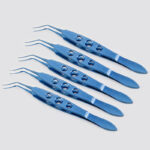 Capsulorhexis Forceps
Capsulorhexis Forceps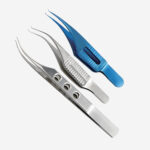 Suture Forceps
Suture Forceps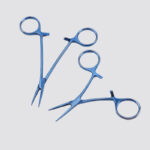 Hemostatic Forceps
Hemostatic Forceps Chalazion Forceps
Chalazion Forceps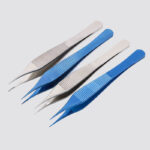 Adson Forceps
Adson Forceps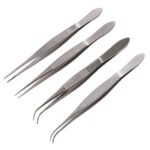 Tissue Forceps
Tissue Forceps